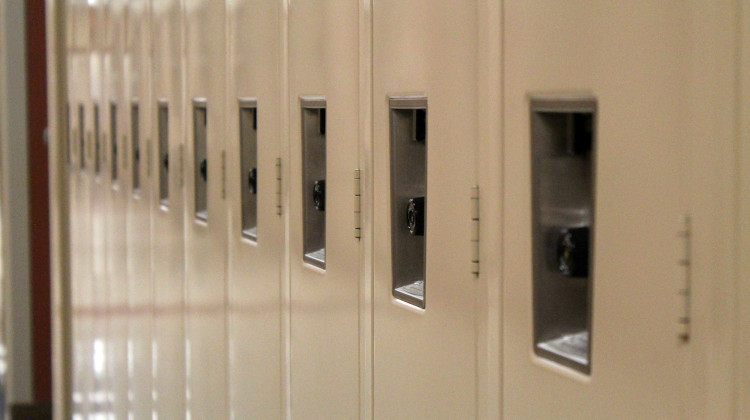
A map of the contaminated site, which sits northeast of downtown Indianapolis. (Photo by Drew Daudelin)
The U.S. Environmental Protection Agency detailed its plan Tuesday night to clean-up a large contaminated area in Indianapolis. But the public hearing was met with anger and skepticism from some residents who live on the site, as the response comes more than five years after the EPA identified the problem.
The EPA says a former dry cleaning company is to blame for much of the widespread soil and groundwater contamination. The affected site, northeast of downtown, is almost 400 acres and includes residential, commercial and industrial buildings.
The solution is called a vapor intrusion mitigation system – special piping that collects air pollutants under a building, breaks them down, then safely vents them into the atmosphere. It looks and functions similarly to radon mitigation systems that have become increasingly common.
The area was identified as a problem site by the EPA in 2013, and officials believe contamination may have started decades before that.
Bill Allen, one of about a half-dozen residents who spoke at the meeting, says the response is far too late.
“I’m more concerned about businesses in the area, the kids, the families," Allen says. "And a lot of people didn’t even show up tonight, so this is…it’s really bad.”
If a home on site is found to have dangerously high levels of pollutants – a process that alone takes six months to complete – the EPA says it will install a vapor mitigation system immediately.
Leslie Blake, the EPA manager in charge of the project, says sites with multiple forms of contamination typically take years to analyze and clean. Blake says measuring contamination and cleaning the entire site is inevitably complex and time-consuming.
"There’s just not an easy fix," Blake says. "There’s an easy fix for the vapor intrusion, to put the system on, but for the groundwater, yes, it’s not a quick fix."
Installation of the mitigation system is free, but residents and building owners will end up paying an increased electrical bill. Blake says most residents will see an increase of $5 to $15 a month.
The EPA says it estimates the total cost of cleanup to be $1.4 to $7.2 million, depending on how many buildings opt to get the system installed.
When asked about health risks for those living in the area, EPA officials say it’s a difficult question to answer, and that a health assessment is underway. They say drinking water in the area has not been affected.
The EPA’s 30-day comment period on the project ends April 5.
 DONATE
DONATE





 View More Programs
View More Programs


 Support WFYI. We can't do it without you.
Support WFYI. We can't do it without you.